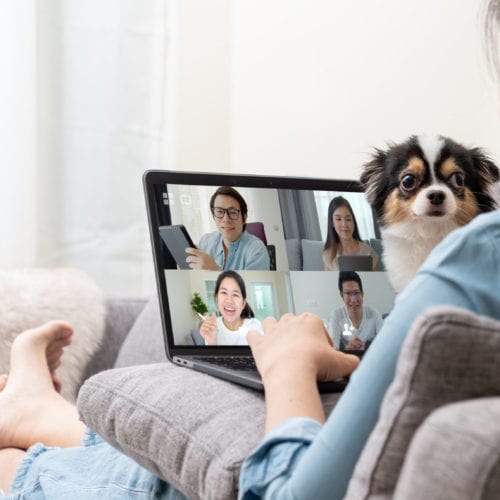
Five Tips for Utility Regulators: Staying on Course through the COVID-19 Storm
Utility regulators are in uncharted waters. States have launched a raft of proceedings to mitigate climate change, reform utility business models, and address other long-term priorities, only to find them blown off course by the worst pandemic the world has seen in a century. How can regulators navigate the COVID-19 crisis without allowing it to sink longer-term efforts?
While key proceedings in some states are stalling, in others regulatory commissions are forging ahead. A closer look at these developments shows that although necessity may be the mother of invention, its father is a willingness to adapt.
Crises can shake us out of our usual routines, prompt a fresh look at existing institutions and processes, and spark the innovation needed to solve persistent problems. Simply put, when circumstances push us out of our comfort zone, it becomes easier to think outside the box.
At RMI we have had to rapidly adapt to continue our work, including support to regulatory reform efforts around the country. Since shifting to work from home and suspending all travel, RMI has facilitated untold numbers of virtual meetings including working group meetings in the Hawaii Public Utilities Commission’s performance-based regulation (PBR) proceeding and three days of stakeholder workshops to implement key parts of North Carolina’s 2019 Clean Energy Plan.
Drawing on lessons learned from these and other experiences, we offer five tips on how to maintain momentum on long-term priorities through this pandemic.
Tip #1: Commit to Steady Progress
The pandemic has thrown a wrench into normal regulatory practice. Commissions must act swiftly to protect vulnerable customers while navigating the logistical challenges posed by social distancing. Regulators in some states have reacted to these pressures by postponing workshops, hearings, and deadlines in key proceedings to unspecified future dates.
However, time is running perilously short to limit global warming to 1.5°C—as climate scientists say we must to limit the risk of catastrophic impacts—and technological and economic changes continue to exert pressure on utility systems and finances. Dropping the ball now on efforts to reduce emissions and reform utility business models would have lasting consequences.
Instead, commissions can maintain steady, unswerving progress. This may require altering existing processes or extending deadlines. However, if timelines must be revised, this should be done in a transparent manner that maintains forward momentum and keeps stakeholders engaged.
For instance, Hawaii’s PBR proceeding aims to better align utility incentives with customer interests and policy objectives. As the process hinges on stakeholder collaboration, the Public Utilities Commission has hosted virtual working group meetings to comply with social distancing and is hosting a two-day virtual workshop this week as culmination of its Phase 2 stakeholder process.
Michigan’s Public Service Commission also converted in-person working group meetings to virtual sessions in its MI Power Grid effort, a proceeding focused on the transition to clean, distributed energy resources. Though the commission had to adjust its schedule due to recent events, it articulated a new timeline to keep the proceeding moving forward.
Tip #2: Leverage Technology to Enhance Stakeholder Engagement
The disruption to in-person events caused by COVID-19 is unlikely to subside soon. Even as stay-at-home orders are lifted, social distancing measures will limit face-to-face gatherings and vulnerable individuals will need to continue self-isolating.
As a result, commissions do not have the luxury of postponing in-person events until the pandemic is past. Instead, to maintain progress on key proceedings while also ensuring dynamic stakeholder engagement, it is critical that commissions adopt alternative means of getting the job done. Fortunately, video-conferencing technologies have come a long way in recent years, and moving hearings, workshops, and other regulatory events online is an eminently workable solution.
While online events have their limitations, they can potentially make proceedings more accessible and inclusive as well. For example, attending an in-person gathering often involves costs related to travel, lodging, and meals, which may limit participation by groups with fewer financial resources. In addition, the time and expense of travel falls disproportionately on more distant participants. Online events can reduce these barriers and allow stakeholders to operate on a more level playing field.
However, virtual meetings can also generate fresh challenges. For instance, participants who lack broadband access may need to participate by telephone. Commissions should make sure that these individuals can still participate fully in discussions (e.g., by emailing slide decks and other materials to participants beforehand so those without video access can follow along).
Tip #3: Develop Your Remote-Meeting Skills
Many techniques used during in-person meetings can be adapted to the online context—such as using Zoom breakout rooms to enable small-group conversations and virtual Post-It notes for brainstorming. However, simply importing an in-person format to an online space is unlikely to achieve the desired outcomes. We offer the following recommendations based on our recent experience:
- Balance participation and efficiency. Since virtual environments limit nonverbal communication, it is important to solicit input while also providing sufficient structure. A failure to strike this balance may leave participants feeling frustrated or allow discussions to meander into off-topic tangents.
- Break it up. Daydreaming and multitasking are particular challenges online, but you can help participants stay focused by breaking things up. Try alternating between presentations and discussions, incorporating short videos, and periodically asking participants to type questions into the chat box. Scheduled breaks are important to let people recharge and breaking up long meetings into shorter sessions over multiple days can allow people who are juggling childcare or other domestic responsibilities to participate.
- Build in social interaction. Most in-person events provide informal opportunities to chat and network. Such interactions build trust and encourage collaboration, but they are easy to overlook when planning an online event. You can build social interaction into online events in various ways, such as by using icebreakers and dividing people up into small groups to brainstorm.
- Anticipate technology snafus. Two simple strategies can limit the disruption caused by technical problems. First, test your online platform and all tools prior to the event. With another person logged in remotely, make sure everything works and that your presentations display correctly. Second, make backup plans. For example, designate a back-up facilitator, know whether you can use your smart phone as a personal hotspot if needed, and designate someone to help participants having technical difficulties.
- Protect your space. Be aware that if you post meeting links or materials publicly, uninvited individuals may access them. However, you can take simple steps to protect your online space. These include requiring people to register beforehand, disabling screen sharing by participants, password-protecting interactive materials (e.g., online documents used for brainstorming) and only sharing the password on the call, and reviewing your settings to ensure you are able to remove disruptive individuals.
Tip #4: Prioritize Key Proceedings
Since responding to the pandemic has increased commission workloads, some ongoing proceedings will need to be delayed. However, commissions should clearly distinguish between lower-priority proceedings, which may be put on a temporary hold, and high-priority proceedings, on which continued forward progress is essential.
For instance, proceedings that are needed to meet emissions-reduction targets should be deemed high priority. Those focused on beneficial electrification, coal-asset retirement, and resource planning fall into this category.
Regulators should also consider the proceeding’s ability to stimulate economic recovery following the pandemic. For example, the clean energy and energy efficiency sectors are important job creators, and they need to grow further to meet decarbonization targets. However, both have been hit hard by the economic downturn, and any delays in regulatory approval of contracted projects are likely to lead to additional business closures and employee layoffs. Commissions should strongly prioritize such proceedings in light of their dual climate and economic implications.
Tip #5: Learn from this Experience
It is natural to look forward to a return to “normal” after the dust of this pandemic settles. However, COVID-19 is exposing structural vulnerabilities and calling existing assumptions into question across society. Rather than a temporary deviation from business as usual, this crisis likely represents a historic turning point for many sectors—and utilities are no exception.
Regulators should therefore be alert to weaknesses exposed by the pandemic and to opportunities to address them. For example, reduced electricity sales could lead to a surge of rate case applications following the pandemic. Commissions may wish to consider adopting revenue decoupling and other performance-based regulation tools to expedite cost recovery in the face of future disruptions.
The coronavirus pandemic also offers broader lessons, such as the cost of delayed action. Governments that began serious preparations before the pandemic took off were better able to limit the virus’ spread, while those that delayed action are facing greater disruptions. This lesson is particularly relevant to addressing climate change.
Those who seek to learn from this pandemic will gain further insights. If regulators can leverage such lessons to strengthen utility systems and incentives, we all stand to gain despite this crisis.

